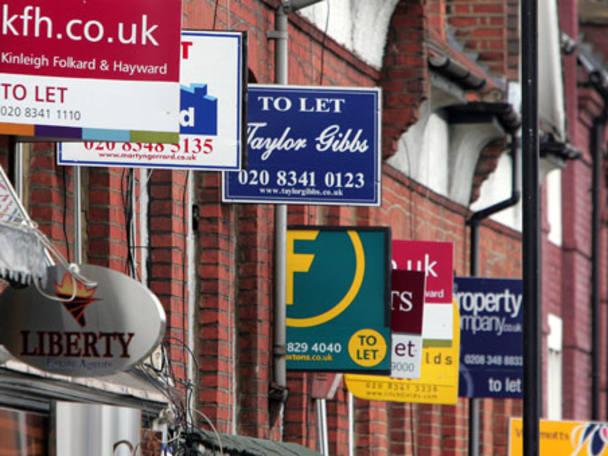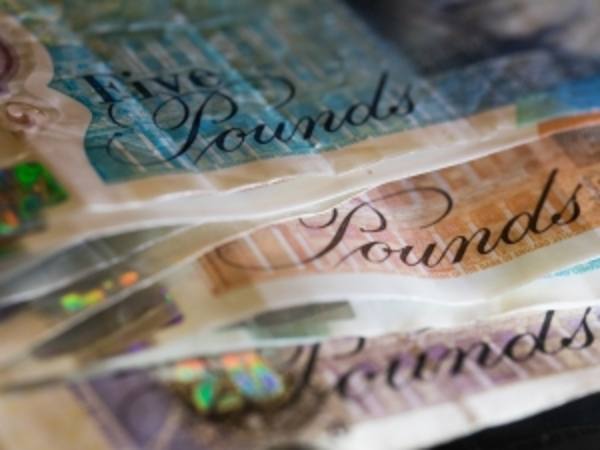Property is considered the best way of saving to make the most of your money, according to a recent survey by the Office for National Statistics. The asset class was chosen by 49 per cent of those surveyed, followed by employer pension schemes, which were selected by 20 per cent. But in the wake of recent tax changes to the buy-to-let sector and growing economic uncertainty, including the prospect of rising interest rates, pensions may be a better way of securing your retirement income.
Buy-to-let pros and cons
Many investors have done well out of the buy-to-let market over the past couple of decades, a period that has seen property prices rise dramatically. Research from buy-to-let specialist Sequre Property Investment reports that landlords who invested £100,000 into UK property 21 years ago could now have a portfolio worth £1,230,644 – more than 11 times the value originally invested.
That figure is based on a landlord investing £100,000 across four properties in 1996 with a 25 per cent deposit on each property, taking out a 75 per cent loan to value (LTV) interest-only buy-to-let mortgage. The landlord could have therefore purchased £400,000-worth of property with £100,000. And as average UK house prices have risen 282.66 per cent since 1996, each property would now be worth £382,661. After subtracting £300,000 for the combined interest-only mortgage that takes the property portfolio to £1,230,644.
And of course the landlord in question would also have benefited from the income achieved from the increase in rental payments over this 21-year period.
"In the UK, internationally speaking, we have quite an unusual love affair with property," says Jon Greer, head of retirement policy at Old Mutual Wealth. "It’s a tangible asset. People can see it, visit it and it has also seen very tangible growth. But what people often forget is that there have also been times when people have been in negative equity [when the market value of a property falls below the outstanding amount of a mortgage secured on it]."
"Investors are fooled into thinking they understand property as an investment because they already own their own home; it means they may overlook the additional legal and financial issues," adds Sarah Coles, personal finance analyst at Hargreaves Lansdown. "The costs of running a physical property portfolio are considerable, and will eat into your returns as an investor. Stamp duty, legal fees, estate agency fees, void periods, maintenance costs, income tax and capital gains tax will all take their toll."
And a number of recent changes to the buy-to-let sector have made it less appealing for those considering this asset class for the first time as a way to boost retirement income. Since April 2016 investors purchasing a property that is not their only home are required to pay a new 3 per cent stamp duty surcharge (or land and buildings transaction tax in Scotland), adding thousands to the purchase price.
Prior to April this year, landlords could also claim higher and top-rate tax relief on all their finance costs, such as mortgage interest and fees paid when taking out mortgages. But since April 2017, some of this relief has been restricted to the basic rate of tax, of 20 per cent. This means a top-rate landlord gets back £20 in relief rather than £45 on part of his/her costs for every £100 of interest paid. And the relief is applied as a tax credit rather than the landlord deducting costs from rental income.
The change is taking place gradually in phases, so for 2017-18 the permitted deduction from rental income will be restricted to 75 per cent of the landlord’s finance costs. The remaining 25 per cent is given relief at the basic rate of tax. In 2018-19, 50 per cent of finance costs can be deducted and 50 per cent will be given lower-rate relief, and so on until in 2020-21 all financing costs incurred by a landlord will be given relief at the basic rate.
Oliver Smith, portfolio manager at IG, says: "The recent tax changes on buy-to-let properties will make a huge impact on the potential for long-term returns. While these changes are only being fully introduced in 2020, a chill wind is already sweeping through the buy-to-let industry. [Investors] need to remember that every pound spent on purchasing a buy-to-let property is paid out of net income and the tax changes mean that if financing costs rise, landlords will have to shoulder higher costs and consequently receive a lower net of tax income on their properties."
Although for prospective entrants the lower yields may not justify the work involved, Investors Chronicle's property correspondent Jonas Crosland says more experienced buy-to-let landlords may be in a better position.
He explains: "For the buy-to-let landlord with no plans to make any more purchases and with no mortgage to repay, the recent increase in stamp duty and tapering of mortgage interest relief will have had no effect on income. In fact, the measures may have been helpful in some ways because landlords might be inclined to push rents higher to recoup some of the income lost."
Pension pros and cons
The key advantage of pension income in retirement is the ability to diversify over a range of assets. That is a key benefit in comparison to property, as property is a notoriously illiquid asset. Some investors may have been tempted to make use of pension freedoms (the change in legislation allowing retirees to access their entire pension pots at retirement from April 2015) to rely more heavily on property. But commentators warn against this.
"During a rising property market, people have been able to ignore the risks of diversification, but if property prices take a dip then having the majority of your wealth in a single asset class does open you up to risk," says Mr Greer at Old Mutual Wealth. "Pensions [allow you to invest in] a wide range of assets and that’s particularly important in your later years as you approach retirement."
Self-invested personal pensions (Sipps) also have the advantage of being less time-intensive to manage than a portfolio of buy-to-let property investments.
"Pensions are a lot easier to own and manage and are fundamentally less stressful as a vehicle," says Tim Bennett, partner and head of education at Killik & Co. "People don’t realise that buy-to-let is not like buying your own home. You’ve got the hassle and stress of managing tenants, of doing maintenance and repairs and the risk that tenants might trash the place."
And pensions have a number of tax benefits over investing in buy-to-let. When you make a payment into your pension you receive tax relief from the government and this can have a considerable impact the more you contribute. Your pension fund also grows tax-free, which can help to boost the amount you have in your fund. And when it comes to withdrawing income, you can take up to 25 per cent of your pension savings out tax-free, although the remaining amount is taxed at your normal rate of income tax.
Gary Smith, chartered financial planner at Tilney Group, says: "Some people have the impression that following pension freedoms it would be better to take money out of their pension and buy a buy-to-let property, but it’s probably the worst thing you can do because first you’ll get taxed on the income you take out of the pot then you buy an asset, for which you pay stamp duty and legal fees and which is subject to capital gains tax [if you sell it at a profit]."
For higher-rate taxpayers contributing to a pension can be particularly useful as they can claim 45 per cent tax relief on their pension contributions. And the attractions are enhanced if the investor is classed as a basic-rate taxpayer by the time he or she starts withdrawing money from their pension, as any taxable income they take will be taxed at the basic 20 per cent.
The tax relief pensions provide mean they can grow your wealth very powerfully. Mr Smith explains: "Let's say you had £100,000 to invest and bought a buy-to-let property, which then went up 10 per cent in value. That property is now worth £110,000. But let's instead say you are a higher-rate taxpayer who decides to put that money into a pension. First you are given tax relief at source, so end up with £125,000 to invest [you get 20 per cent relief on £125,000 from paying in £100,000]. If the pot also goes up 10 per cent it will have grown to £137,500. And if, as a higher-rate taxpayer, you claim the additional 25 per cent tax relief on contributions, the actual cost of investing into the pension to you is £75,000. So for an investment of £75,000, you’ve got a pot of £137,500, compared with the £110,000 that the buy-to-let investor has made."
It can also be more tax-efficient to pass on a pension fund to your family than buy-to-let properties. Under the current rules, if you die before age 75 your beneficiary will receive your pension fund completely tax-free. If you die after 75, the income your heir draws on the pension fund will be taxed at their normal income rate.
But pensions also come with some drawbacks. For example, individuals are typically only able to contribute a maximum of £1m into a pension without triggering an extra tax charge. This lifetime allowance applies to the total of all the pensions you have, including the value of pensions promised through any defined-benefit schemes you belong to, but excludes your state pension. An investor who decided to sell their buy-to-let investments and put the proceeds in a pension could end up paying more tax by breaching the lifetime allowance.
Colin Low, a chartered financial planner and the managing director of Kingsfleet Wealth, says: "We have dealt with people who have moved out of their buy-to-let investments and into pensions and the tax consequences can be significant as they could be sitting on a very large capital gain. But there are some ways of mitigating those liabilities, such as venture capital trusts (VCTs) and the Enterprise Investment Scheme (EIS), which can be used for that."
Pensions also have age restrictions attached to them. Investors are typically only able to access their pot at age 55, which is unhelpful if you’re in the fortunate position of being able to retire before then.
The risk that the government could change the rules on pensions, such as by removing the generous tax relief available to higher-rate taxpayers, is also another factor to consider.
Personal pension contributions hit a record high in the UK in the financial year ending in 2016, with 9m people contributing £24.3bn.
"The Treasury’s pension tax relief bill is rising because automatic enrolment, the central plinth of the government’s savings strategy, has been successful in boosting the number of people saving for retirement in the UK,” explains Tom Selby, senior analyst at AJ Bell. "There has already been speculation that Chancellor Philip Hammond will take the axe to pension tax relief in his first post-election Budget, and numbers such as these will inevitably add fuel to the fire."










